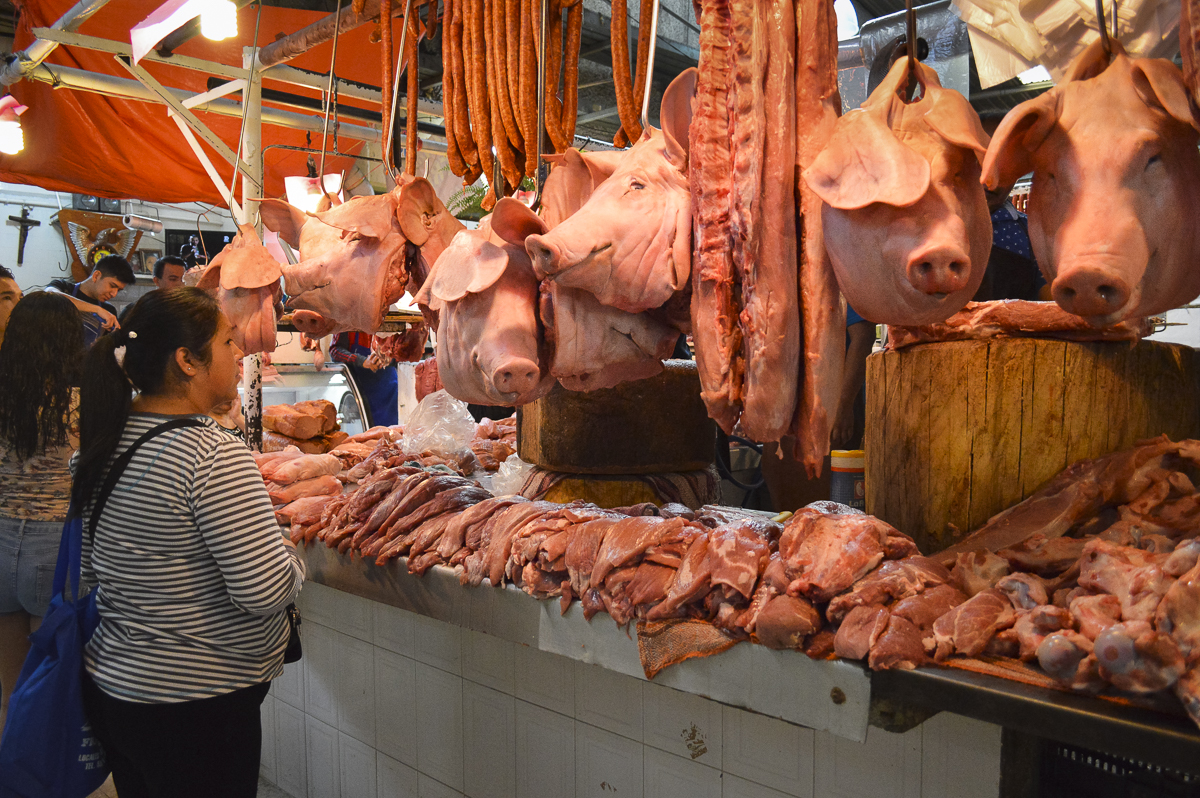Check Out the Regional Taste at Bagley Farms Meat Market Edwardsville IL: Fresh and Delicious
Check Out the Regional Taste at Bagley Farms Meat Market Edwardsville IL: Fresh and Delicious
Blog Article
Uncover the Art of the Butcher's Cut in a Modern Meat Market
In the ever-evolving landscape of contemporary meat markets, the butcher's cut has transcended its typical origins, merging olden workmanship with contemporary techniques. What really sets the modern-day butcher apart is their capacity to build a much deeper link in between customers and the beginnings of their meat.
Development of Butchery Methods
The development of butchery techniques mirrors a rich tapestry of development and adaptation driven by advancements in innovation, changes in customer demand, and a deeper understanding of meat science. Historically, butchery was a craft gave through generations, with techniques developed over centuries to optimize return and flavor. Nonetheless, the industrial transformation introduced mechanization, transforming standard practices and allowing massive handling.
The mid-20th century saw butchery strategies even more fine-tuned by clinical understandings into muscle mass biology and meat aging, improving both inflammation and preference. Developments like vacuum cleaner product packaging and refrigeration expanded item shelf-life, allowing butchers to diversify offerings and boost quality assurance. This period likewise marked the increase of specific devices, such as band saws and meat slicers, which raised accuracy and efficiency in meat processing.

Digital systems now aid in monitoring pet provenance and maximizing cuts to satisfy particular customer choices. Furthermore, a resurgence in artisanal butchery has actually arised, mixing conventional abilities with contemporary knowledge to provide to consumers looking for honest and lasting meat alternatives.
Understanding Meat Cuts
Understanding the complexities of meat cuts is necessary for both butchers and consumers seeking top quality and value. For butchers, accurate cuts mirror skill and respect for the craft, making sure marginal waste and optimal yield.

Comprehending muscular tissue structure is crucial; muscle mass used a lot more regularly by the animal have a tendency to be tougher and are best matched for sluggish cooking approaches, while less-used muscles, like those discovered in the loin, are extra tender and perfect for cooking or roasting. Experience with these distinctions equips consumers to make enlightened choices, boosting their culinary undertakings.
Picking Quality Meat
Picking the ideal meat involves greater than just choosing a visually attractive item from the screen. bagley farms meat market edwardsville il. The art of selecting high quality meat requires a discerning eye and expertise of particular attributes that symbolize quality and excellence. First of all, pay focus to the color; beef must have an intense, cherry-red shade, while lamb needs to exhibit a soft pink tone, and pork a pale pink. This suggests the meat is fresh and hasn't been revealed to oxygen for too long.
Second of all, consider the marbling, which refers to the white streaks of fat within the muscular tissue. Proper marbling is a key sign of tenderness and flavor, as it melts throughout food preparation, boosting the meat's juiciness. Remember, higher marbling commonly associates with superior top quality cuts, such as USDA Prime.
Texture is one more crucial factor; meat should feel solid to the touch, not slimy or excessively soft. Furthermore, be conscious of the aroma. Fresh meat must have a tidy, neutral odor, devoid of any kind of sour or repulsive smells.
Matching Cuts With Cooking Techniques

Conversely, tougher cuts like brisket and chuck roast are abundant in collagen, which damages down into gelatin when cooked gradually. These cuts are ideal for braising or slow roasting, enabling the meat to tenderize gradually and create deep, complex flavors. Likewise, cuts such as brief ribs and pork shoulder make out well with slow-cooking approaches, where extended cooking times transform their robust structures right into delicious recipes.
Lamb shanks and oxtail, which call for long term food preparation to soften, are excellent you could try these out prospects for cooking or slow-moving simmering. These techniques coax out rich, hearty flavors while preserving moisture. By comprehending the distinct attributes of each cut, chefs and home cooks alike can raise their cooking creations, guaranteeing each dish is both satisfying and memorable.
The Butcher's Role Today
Browsing the progressing landscape of the contemporary meat market, the butcher's duty today expands beyond mere prep work of cuts. Contemporary butchers are culinary craftsmens, teachers, and supporters for lasting practices. They link the void in between the ranch and the fork by making sure honest sourcing, understanding pet husbandry, and prioritizing openness in the supply chain. This shift shows the growing customer demand for top quality over quantity, where provenance and pet well-being are vital.
In addition to crafting specific cuts, butchers currently involve directly with clients, using cooking recommendations and tailoring choices to fit individual demands and choices. Their knowledge in meat aging, marbling, and taste profiles equips consumers to make educated decisions, boosting their culinary experiences. This customized service exhibits the butcher's advancing duty as a trusted expert in the kitchen area.
Furthermore, butchers are pivotal in reducing waste, using entire animals to develop diverse products such as sausages and stocks. This extensive technique not just appreciates the pet but also straightens with contemporary sustainability goals. In this means, the contemporary butcher embodies both custom and development, adapting to an ever-changing market while protecting the virtuosity and honesty of their craft.
Verdict
The contemporary butcher's craft intricately weaves typical methods with modern-day technologies, stressing lasting techniques and honest sourcing. Proficiency in recognizing varied meat cuts and quality indicators encourages butchers to offer informed suggestions, lining up particular cuts with ideal food preparation methods. This expertise not only boosts cooking experiences but also strengthens the connection between Your Domain Name customers and the beginnings of their food. By recognizing historical practices while embracing you can try these out contemporary demands, the butcher's role continues to be essential in today's sophisticated meat market (bagley farms meat market edwardsville il).
Report this page